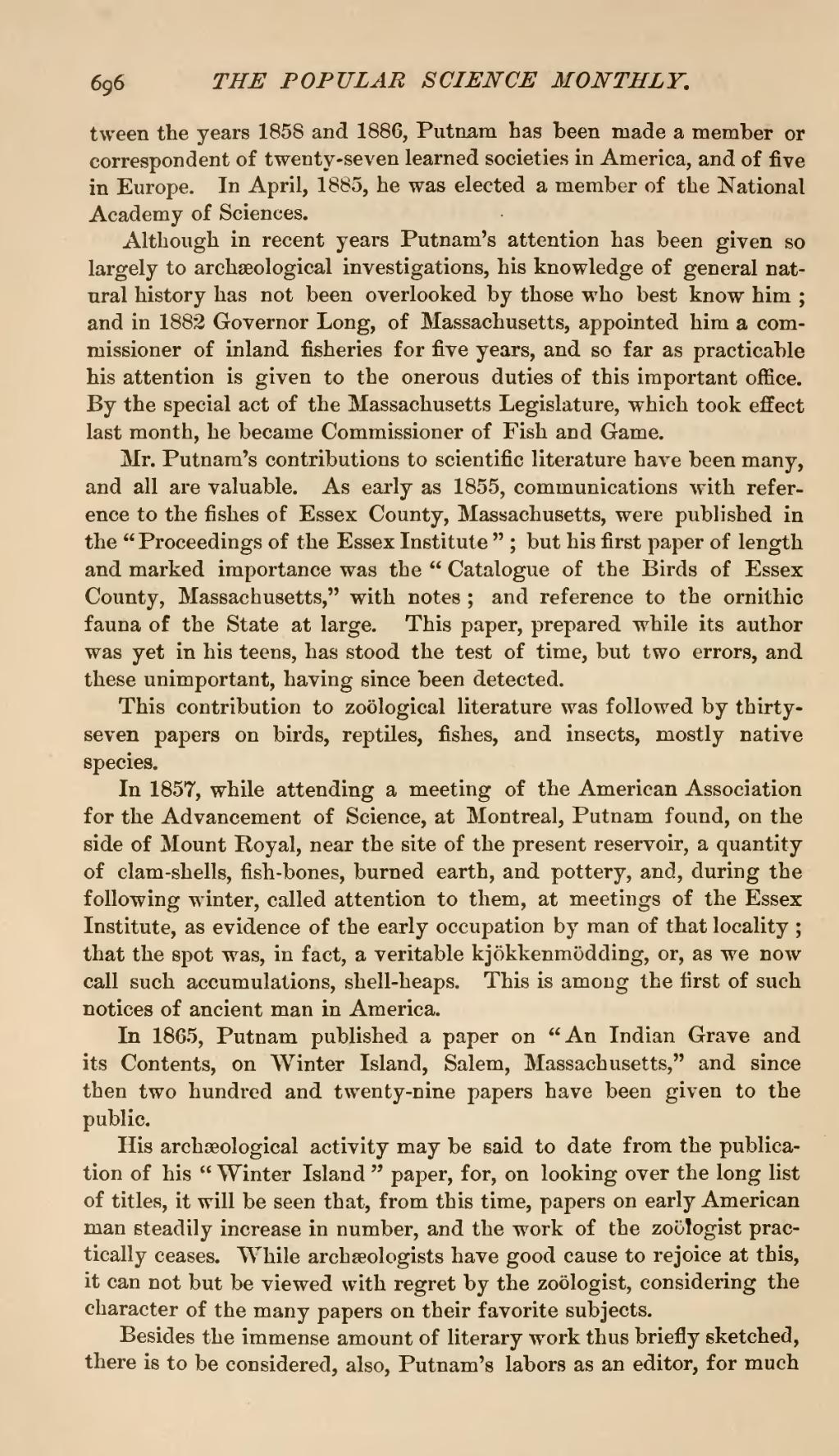tween the years 1858 and 1886, Putnam has been made a member or correspondent of twenty-seven learned societies in America, and of five in Europe. In April, 1885, he was elected a member of the National Academy of Sciences.
Although in recent years Putnam's attention has been given so largely to archæological investigations, his knowledge of general natural history has not been overlooked by those who best know him; and in 1882 Governor Long, of Massachusetts, appointed him a commissioner of inland fisheries for five years, and so far as practicable his attention is given to the onerous duties of this important office. By the special act of the Massachusetts Legislature, which took effect last month, he became Commissioner of Fish and Game.
Mr. Putnam's contributions to scientific literature have been many, and all are valuable. As early as 1855, communications with reference to the fishes of Essex County, Massachusetts, were published in the "Proceedings of the Essex Institute"; but his first paper of length and marked importance was the "Catalogue of the Birds of Essex County, Massachusetts," with notes; and reference to the ornithic fauna of the State at large. This paper, prepared while its author was yet in his teens, has stood the test of time, but two errors, and these unimportant, having since been detected.
This contribution to zoölogical literature was followed by thirty-seven papers on birds, reptiles, fishes, and insects, mostly native species.
In 1857, while attending a meeting of the American Association for the Advancement of Science, at Montreal, Putnam found, on the side of Mount Royal, near the site of the present reservoir, a quantity of clam-shells, fish-bones, burned earth, and pottery, and, during the following winter, called attention to them, at meetings of the Essex Institute, as evidence of the early occupation by man of that locality; that the spot was, in fact, a veritable kjökkenmödding, or, as we now call such accumulations, shell-heaps. This is among the first of such notices of ancient man in America.
In 1865, Putnam published a paper on "An Indian Grave and its Contents, on Winter Island, Salem, Massachusetts," and since then two hundred and twenty-nine papers have been given to the public.
His archæological activity may be said to date from the publication of his "Winter Island" paper, for, on looking over the long list of titles, it will be seen that, from this time, papers on early American man steadily increase in number, and the work of the zoölogist practically ceases. While archæologists have good cause to rejoice at this, it can not but be viewed with regret by the zoölogist, considering the character of the many papers on their favorite subjects.
Besides the immense amount of literary work thus briefly sketched, there is to be considered, also, Putnam's labors as an editor, for much

